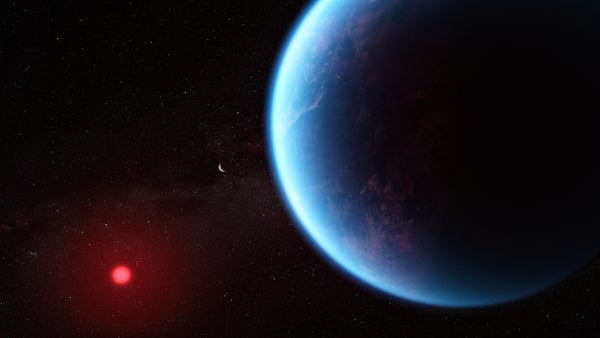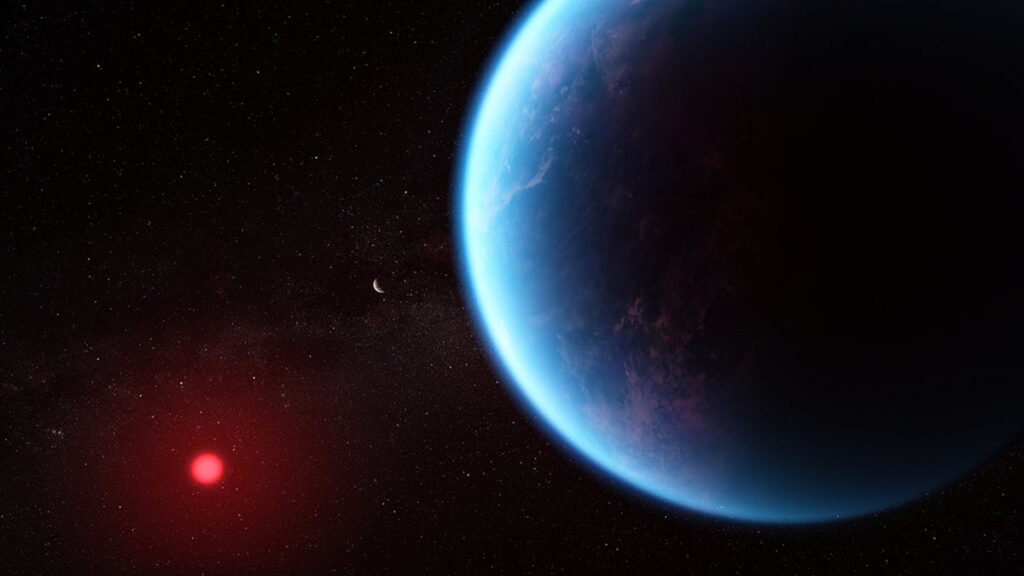Dimethyl Sulfide Detection: A Potential Sign of Life on K2-18 b?
NASA’s James Webb Space Telescope has reportedly detected significant levels of dimethyl sulfide in the atmosphere of the exoplanet K2-18 b, leading to speculations about the possibility of extraterrestrial life.

Understanding Dimethyl Sulfide
Dimethyl sulfide (DMS) is a sulfur-containing organic compound recognized for its distinctively strong odor. Composed of one sulfur atom bonded to two methyl groups (each containing one carbon and three hydrogen atoms), DMS is notably prevalent on Earth, particularly as a byproduct of marine phytoplankton.
The Path from Earth to K2-18 b
On our planet, DMS plays a crucial role in atmospheric chemistry. It rises to the atmosphere and contributes to cloud formation, impacting climate models and meteorology. The molecule’s rapid degradation in Earth’s nitrogen-rich atmosphere contributes to its classification as a possible biosignature in extraterrestrial environments, suggesting its production by biological processes.
K2-18 b, a distant exoplanet about 124 light-years away, has caught the scientific community’s attention since its discovery in 2015. With a size between Earth and Neptune, its atmospheric analysis by JWST revealed either dimethyl sulfide or a closely related compound, raising intriguing questions about the planet’s potential to support life.
Recent Discoveries and Their Implications
A recent study led by Nikku Madhusudhan, an astrophysicist at the University of Cambridge, announced new findings indicating the presence of dimethyl sulfide in the atmosphere of K2-18 b, suggesting much higher concentrations than those found on Earth. This could indicate biological activity, but the findings remain controversial.
Challenges in Confirming Biological Signatures
Despite the excitement surrounding these findings, experts caution against assuming DMS is definitively linked to life. Eleanor Browne and Nora Häni, both researchers studying atmospheric chemical processes, point out that DMS can be produced through non-biological means as well. Experiments simulating early Earth atmospheres have yielded DMS without the involvement of living organisms, and its presence on a comet (67P/Churyumov-Gerasimenko) further complicates the picture.
Moreover, Chris Lintott, an astronomer at the University of Oxford, emphasizes that if life were to produce DMS, it should also produce a variety of other chemical compounds as part of a complex network, which have not been detected. With K2-18 b’s atmosphere primarily composed of carbon dioxide, the breakdown rate and processes for DMS may differ significantly from those on Earth.
Conclusion
While the detection of dimethyl sulfide in K2-18 b offers exciting prospects for the search for extraterrestrial life, scientists stress the need for a more nuanced understanding. The complexities of planetary atmospheres and chemical processes require a careful approach to interpreting potential biosignatures. Ongoing research and additional observations will be integral to unraveling these mysteries and assessing the potential for life beyond our home planet.


